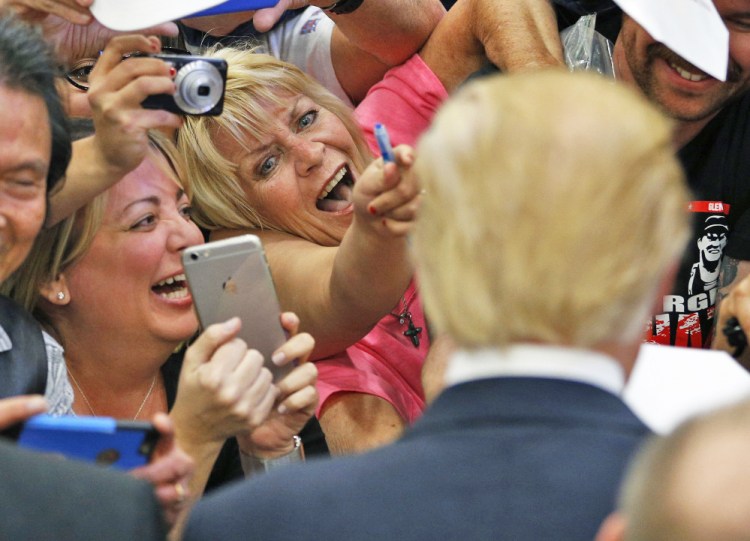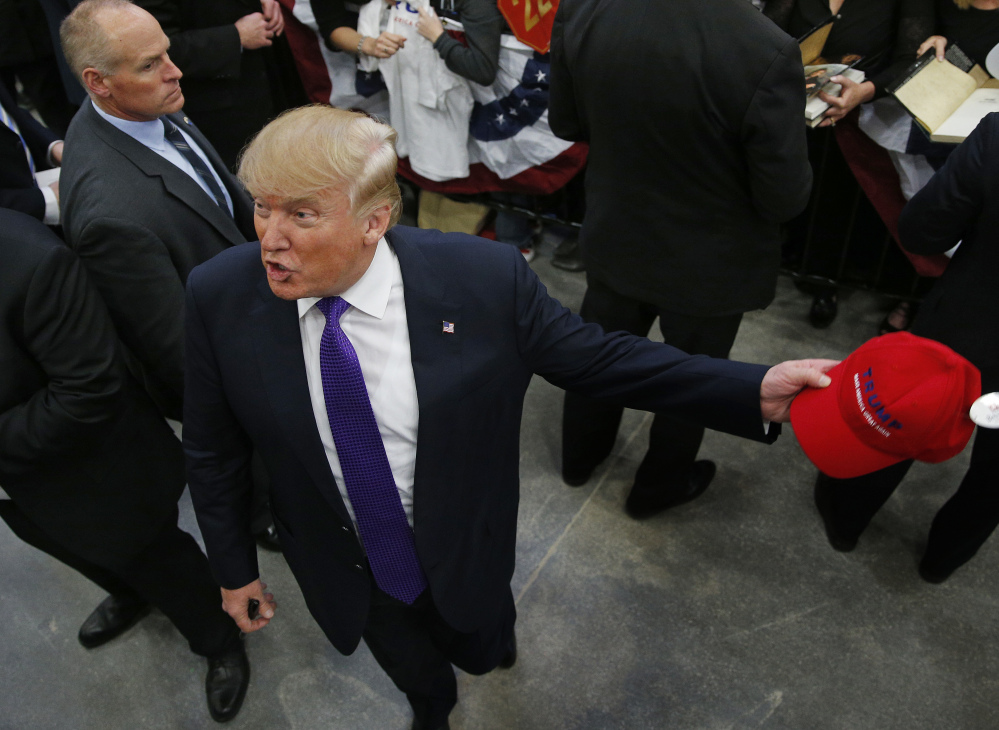Presidential politics is, at its core, all about math. Nowhere is that more true than in the fight for delegates to this summer’s Republican National Convention. And, the delegate math is close to conclusive: Donald Trump will be extremely close to the 1,237 delegates he needs to formally claim the party’s nomination by the end of the primary process.
Let’s do the math – or, rather, let’s do the math forwarded to me by a Republican number-cruncher who counts himself as a card-carrying member of the Republican establishment but who also regards Trump’s nomination as nearly inevitable.
Through three states, Trump has 67 delegates as compared to 11 for Ted Cruz, 10 for Marco Rubio, five for John Kasich and three for Ben Carson. The Nevada Republican caucuses will give out 30 delegates on a proportional basis on Tuesday night; FHQ’s Josh Putnam estimated in December that Trump would win 12 delegates, but he now seems likely to perhaps claim a few more than that.
That’s our starting point.
The biggest chunk of delegates, approximately 55 percent (1,360 delegates) are doled out proportionally. Assuming that past is prologue, let’s give Trump 30 percent of these delegates, which totals 408.
Sixteen percent of the delegates will be doled out on a winner-take-all basis, meaning that if you win the state you win all of its delegates. The two biggest prizes in the winner-take-all states, which, under Republican National Committee rules, can’t hold a presidential vote until March 15, are Ohio and Florida. The former allocates 66 delegates, the latter 99. Connecticut, which allocates 25 delegates, is a somewhat special case, but, for the moment, let’s leave it in winner-take-all. Given Trump’s dominance in polling in these winner-take-all states, give him all 396 delegates available.
There are 618 delegates (25 percent of the total) given out in some sort of hybrid process – a combination of winner-take-all and proportional allocation. Give Trump half of the winner-take-all and 30 percent of the proportionals in this rough calculation. That’s 412 delegates.
Another 4 percent of delegates are allocated by conventions and caucuses. Again, assume Trump gets 30 percent, which makes for 30 more delegates. Seven percent of delegates are RNC members. It’s hard to imagine Trump winning any of these. So, zero in that category.
Add it all up and you have Trump at 1,246 delegates – or nine more than he would need to be the party’s official nominee at the party convention in Cleveland in July.
Now back to Connecticut. It is winner-take-all if the winner gets over 50 percent of the vote. If not, the delegates are awarded winner-take-all by congressional district with the at-large delegates being allocated proportionally to any candidate who gets more than 20 percent of the statewide vote. If Trump can’t get to 50 statewide, he doesn’t take all 25 delegates and that could mean he falls slightly short of the 1,237 he needs nationally.
Then there is the matter of Ohio. Ohio is winner-take-all, as I mentioned above, but is made more complicated for Trump because Kasich, the Republican governor of the state, is still in the race. A Quinnipiac University poll out Tuesday morning shows Trump at 31 percent in the state with Kasich close behind at 26 percent. It’s not clear whether Kasich can beat Trump in the Buckeye State or if he is able to stay in the race all the way until March 15 when Ohio voters go to the polls. But, if Kasich could beat Trump in Ohio, you subtract 66 delegates from Trump’s 1,246 – leaving him at 1,180, and just short of the nomination.
For all the talk about Rubio vs. Cruz and who might be the stronger candidate in a one on one against Trump, it’s worth noting that the cake is very, very close to being baked for Trump on the delegate math. Something cataclysmic is going to have to happen – and soon – to keep Trump from being over or very close to the 1,237 delegates he needs to be the party’s nominee when these primaries end on June 7.
Send questions/comments to the editors.



